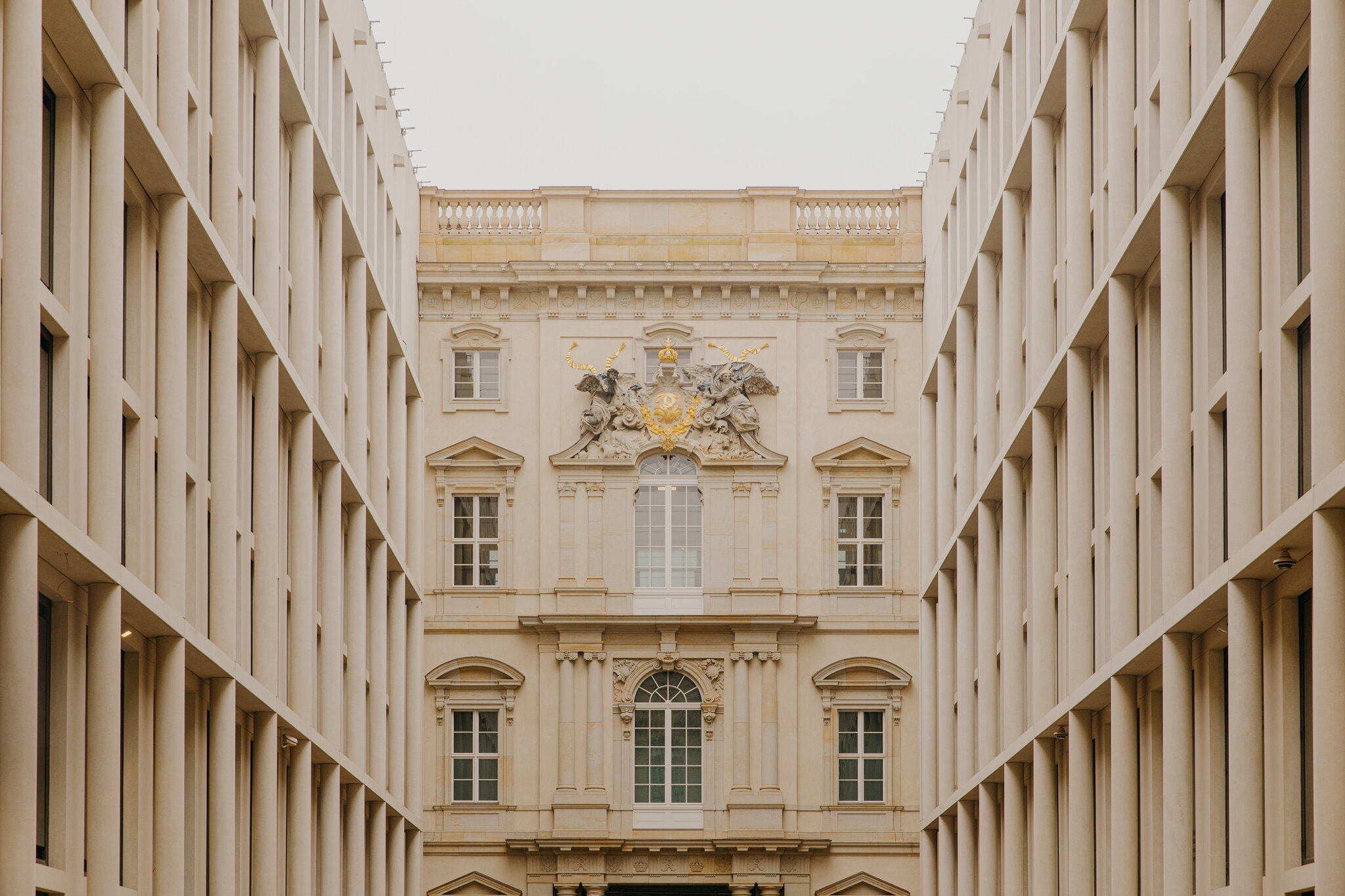The New York Times reports on the opening of the Humboldt Forum, a new Museum in Berlin. When I showed the photograph (left) to my wife her reaction was “It looks like a prison.” She wasn’t referring to the Baroque facade, of course. I haven’t seen the museum, but the photograph is like a beauty contest—Baroque vs Modernist—and it’s pretty obvious who is the winner. The Forum sits on the site of the Berliner Schloss, the immense royal palace that had been greatly expanded by Frederick the Great in the early 18th century and whose dome was based on a design by Karl Friedrich Schinkel. The Schloss, which is considered one of the great works of Prussian Baroque architecture, was damaged in the Second World War, and in 1950, the East German government entirely demolished the building (it took 19 tons of dynamite) and replaced it with the Palast der Republik, a modernist building housing the GDR parliament. After German reunification, the Palast was torn down and it was decided to re-build the original 18th-century palace. Although the Times reporter referred to the new building disparagingly as a “facsimile,” there is a long tradition of restoring damaged or destroyed buildings (the medieval St Mark’s Campanile in Venice was rebuilt in 1912 after collapsing). The Campanile was entirely restored, but the Berlin restoration is partial. Three of the four facades are Baroque, the fourth is modernist, and the same strategy governs the design on the interior courts (see photo). It is an oddly half-hearted approach to restoration that has pleased neither traditionalists nor modernists.


Another example of how hard it is to assess buildings only from photos. Until we can travel freely again and judge for ourselves how well the building functions for its purpose and users, photos will be what we have, and a poor second-best they are. The above photo has been artfully cropped to obscure the fact that we’re looking at a narrow interior courtyard serving as the employees parking lot. An aerial view shows the three modern elements are on the interior of the building, except for the riverfront facade. Historical photos of the original palace suggest the river side was always more utilitarian than the other three facades so that seems an acceptable compromise.
The architect and client deserve the benefit of the doubt regarding their decisions to mix modern with historical recreation. Budget and intended functionality probably played as much of a role as esthetic considerations. They usually do. The building is a museum, not a palace, and should work as such. These ancient/modern mashups have become common enough that most people don’t give them a second look.
All good points, but I still think the juxtaposition is clumsy.
Agreed, though it looks like the architect has made a good faith effort to align the cornices and fenestration between the two styles. Back in the 80s when I took some urban design courses such care would have been considered a mark of rare sensitivity in a profession still dominated by doctrinaire modernism as I recall.
Speaking of Berlin, the Berlin-based violinist Daniel Hope has been streaming concerts from historic venues around Germany during the pandemic. Good music, very well recorded, plus views of interiors. Hope@home on Tour, on YouTube